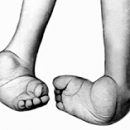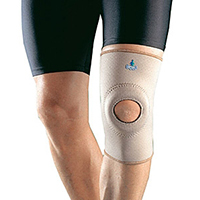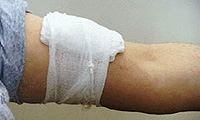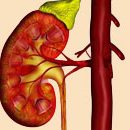From this article, you will learn about the development and diagnosis of PEDGET's disease.
Content
 Pedget disease (j. Paget eng. Surgeon, 1814-1899; Synonym: a deforming islage, deforming the coesting, deforming osteodistrophy) - a skeletal disease in which the defeat of one or several bones is observed as a result of the pathological restructuring of bone tissue.
Pedget disease (j. Paget eng. Surgeon, 1814-1899; Synonym: a deforming islage, deforming the coesting, deforming osteodistrophy) - a skeletal disease in which the defeat of one or several bones is observed as a result of the pathological restructuring of bone tissue.
As for the exact cause of the development of Pingzt's disease, it is not clarified. There is a theory of vascular autoimmune hormonal disorders, the theory of violation of the biosynthesis of connective tissue. The most common opinion about the viral nature of the disease.
In the disease of the PEDGET, deep disorders of bone metabolism occur, which is confirmed by the change in certain biochemical blood and urine indicators.
The essence of the process lies in a sharply pronounced pathological restructuring of the bone characterized by the continuous change of the processes of resorption and the construction of new masses of the bone substance in the same bone structures.
Each generation of a neoplated bone substance is separated from the neighboring so-called bonding line, which creates the mosaic of the structure of bone structures.
It is customary to distinguish between the three phases of the development of Pedge's disease:
- focal intensive bone resorption (osteolatic, or destructive, phase);
- The mixed phase, when, along with the resorption of the bone, the processes of the neoplasm of it are coming;
- Osteoblastic (or sclerotic) phase with the formation of typical mosaic structures.
Pedge's disease is developing mainly at the age of 40-50, but the so-called youth form is also found. Clinical manifestations depend on the localization of the process and the degree of propagation. The first signs of the disease are pains in the bones and joints. In the future, the deformation of bones. Long tubular bones are gradually thickened, their arcuate curvature develops. The local hyperthermia is characteristic (above the affected bone). Limiting mobility in the joints, chromota, as a rule, develop in far-closed stages of the pathological process. With damage to the skull, it increases in size due to the thickening of the bones of the arch and base. In this case, the compression of the brain may be observed, which is manifested by headaches, vision disorder and hearing, intracranial hypertension. With damage to the spine of patients bother pain, the compression of the roots or spinal cord can develop. In engaging in the process of the pelvis and bones, forming hip joints, coxarthrosis develops. In case of damage to long tubular bones, pathological fractures are often. The most terrible complication of the disease of PEDGET - Malignation with the development of sarcoma (in 3-15% of observations).
The diagnosis is determined mainly on the basis of x-ray data. Early stages of disease radiologically characterized by changes in the internal bone architectonics, then thickening and deformation of the bone are joined.
The most typical of the Pedge's disease is visible in the pictures of a specific restructuring of bone tissue. Bone crossbars are thickened, grouped into bundles, as a result of which the entire bone structure acquires a rough view, cells between bone crossbars become large, irregular shape, bone crossbars mainly retain their functional orientation.
In the process of restructuring, a cortical substance is involved, which acquires a fibrous form; In the future, the border between the cortex and the spongy substance is lost, the bone at the level of the lesion is thickened, deformed. The object of contours of the bone is always saved. Rebuilt long tubular bones are gradually curved, with a convex side, the zones of pathological functional restructuring are often developing - the so-called Lozer zones.
X-ray signs of osteogenic sarcoma, developing on the soil and other tumors are the same as when developing them in unaffected bones.
Differential diagnosis is carried out with parathyroid osteodistrophy, chronic osteomyelitis, osteomation, marble disease, hyperostosis, acromegaly, metastases of malignant tumors in bone, myeloma disease, with a change in bones with tertiary syphilis, etc.
Forecast in the absence of complications favorable. Patients with PEDGET's disease should be on the dispensary observation of the orthopedic.









